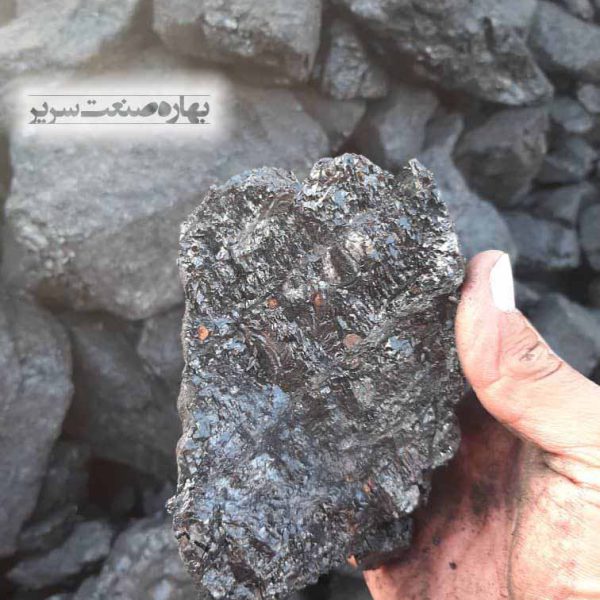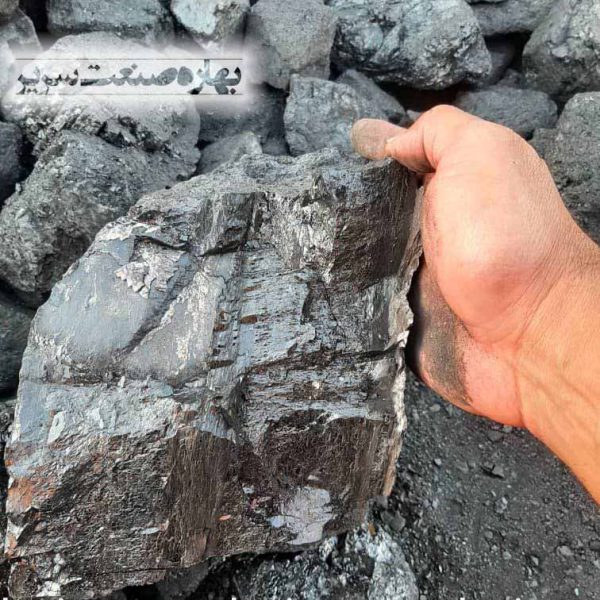coal

Coal is a common fuel that is used in many large factories and industries. In terms of origin, coal is a combustible sedimentary rock that is found in some parts of the earth as coal beds or veins. The color of this substance is usually black or blackish brown, and its formation usually takes millions of years. Coal is formed mainly by geological processes and is a type of fossil fuel that was created many years ago from the remains of dead plants. It is classified as a non-renewable energy source and consists of elements such as carbon, sulfur, hydrogen, nitrogen and oxygen
making electricity:
In general, coal is mainly used in the production of thermal electricity. In this way, this material burns at high temperature and turns water into steam. This steam is used to turn turbines at high speed in a strong magnetic field, and finally electricity is generated.
Conversion to gas and liquid:
Coal can be converted into a synthetic gas, which is a mixture of carbon monoxide and hydrogen. These gases are an intermediate product that can be further converted into various products such as urea, methanol, pure hydrogen, etc. Coal can also be converted into liquids known as synthetic fuels. However, chemicals produced from coal are primarily used to produce other products. In addition, most of the products in the market contain coal or contain coal by-products as one of their components. Some of them include aspirin, solvents, soap, paint, plastic and fibers including nylon and rayon.
Production of specialized products:
Coal is also an essential ingredient in the production of special products such as activated carbon, carbon fiber and silicon metals.
Home use:
In cold regions and in developing or underdeveloped countries, coal is still used as fuel for cooking and as a source of heat.

peat (peat):
Peat is the first step in the transformation of plant remains into coal. Peat is a dense mass of incompletely decomposed plants. At this stage, the dead plant mass cannot yet be called coal.
Lignite:
Lignite or brown coal can be considered the lowest grade of coal (grade in terms of charring). Lignite is only used to generate electricity in power plants. But it should be noted that lignite has the most damage to health and the environment.
Pseudo-bituminous coal (coal under bitumen):
Semi-bituminous coal (semi-bituminous) is a type of coal whose carbonization degree is between lignite and bituminous coal. This type of coal is also used to produce electricity.
Bituminous coal (bituminous coal):
Bituminous coal is a dense sedimentary rock, usually black or dark brown in color, often with light and cloudy bands. The most important application of bituminous coal is the production of electricity. Coke is also produced through its distillation. Coke has a very high carbon content (80-90%).
Anthracite:
Anthracite or hard and black coal has the highest rank among coals. Anthracite has a black and shiny appearance and has the lowest amount of water and volatile substances and the highest carbon content (between 92 and 98%) among coals.
Graphite:
Graphite, which we all know as the brain of a black pencil, is a type of coal that is hardly flammable; Therefore, it is not usually used as fuel. Graphite powder is also used to lubricate mechanical devices. Cannell coal: This material, sometimes called pile coal, includes a variety of fine-grained, high-grade coal with significant hydrogen content, mainly composed of liptinite. Another product of this material is coal tar. Tar is a dense liquid obtained from the distillation of carbonaceous materials such as coal.

Types of coal
Metallurgical coal: It includes coking coal (hard, medium and semi-soft) and powdered coal, which is the main element in the iron and steel industry. Of course, if the coking coal is immature, it can still be used in power plants. Coking coals are often of bituminous grade, which is used in the preparation of coal concentrate and finally coking. This type of coal has a higher carbon content than lignite and less than anthracite. The structural characteristics of coking coal are: fixed carbon 85-90%, ash 5-13%, moisture up to 8%, volatile matter 1.6-11% and sulfur 0.5-1.2%.

Coal industry in the world
The history of coal mining goes back thousands of years. The use of coal became very important at the same time as the industrial revolution occurred in the 19th and 20th centuries and the appearance of the first steam engine. Currently, the coal industry is one of the most controversial industries in the world. Most of the coal in the world is used to produce electrical energy. While the world and especially the economically advanced countries, due to its harmful effects on the environment, have been looking for alternatives to fossil fuels and the use of renewable energy in electricity production, but still about 40% of the world’s electricity is using It is produced from coal. Among fossil fuels, coal is the most common type and accounts for 64% of all recoverable fossil fuels in the world.
According to the International Energy Agency’s World Energy Outlook report, coal-fired power generation will increase by 10% from 9.41 trillion kWh in 2015 to 10.39 trillion kWh in 2040 by 2040. Therefore, for the next three decades, coal will be one of the main sources of electricity production in the world, and investment in the extraction of this mineral will continue.
After the production of electrical energy, the steel industry ranks second in the global consumption of coal. According to the Global Coal Institute, 74% of the world’s steel is produced by blast furnace and converter using coked or metallurgical coal. Coal, in addition to the production of electric energy and steelmaking industries in the world, in other cases such as alumina refining, papermaking, chemical and pharmaceutical industries, refined bituminous coal, ammonia gas recovery for the production of chemical fertilizers, pigments, graphite for electrodes, water purification, cosmetics and sanitary, liquid fuel, source of energy supply for the production of cement, plastic products and fibers, production of metals, alloys, ferroalloys, etc. is also used.
Factors determining the price of coal concentrate
In general, the price of coal is affected by the price of other fuels. When other fuels are more attractively priced, demand for coal falls, and when other fuels rise in price, coal becomes more attractive.
In December of 1997, after a long discussion about the pricing method of coal and coal concentrate, which was always a source of discontent among the producers, a formula was agreed upon by the producers (Coal Association) and the major consumer of coal (Isfahan Iron Smelter). It was approved according to the formula determined for the purchase price of coal based on 26.5% of the price of Khuzestan steel ingots in the commodity exchange based on the technical specifications agreed between Isfahan Iron Smelter and Iran Coal Association.
Due to the fact that in the past years, the amount of coal concentrate production in the country did not meet the domestic needs, the export of this product has been abandoned in order to meet the domestic needs. Coal production in the world According to the data of this report, the largest production and extraction of coal belongs to China, followed by India, the United States, Indonesia and Australia.

Most of the companies active in the coal industry in Iran sell their products in raw form, but among the 4 listed companies, only Negin Tabas Coal Company sells raw products, and Parodeh Tabas Coal and Prodeh Tabas Coal Processing and Industrial Coal Companies, a mining company in the northeast of Shahrood. They produce their product in the form of coal concentrate. Considering the country’s access to oil and gas resources, the contribution of coal in the country’s energy supply has been very small. According to the British Petroleum report, the share of coal in Iran’s total energy consumption in 2020 was equal to 1%, while the share of oil was 27% and the share of natural gas was 70%. Also, in 2020, only about 0.7 terawatt hours of electricity was produced through coal, and 220.4 terawatt hours were produced through natural gas and 82.1 terawatt hours through oil.


The composition of this material has approximately (moisture, volatile substances, fixed carbon and ash) and more precisely includes (ash, carbon, hydrogen, nitrogen, oxygen and sulfur). A typical bituminous coal may contain 84.4% carbon, 5.4% hydrogen, 6.7% oxygen, 1.7% nitrogen, and 1.8% sulfur on a dry, ashless weight basis. Many books on sixty-three percent of the past, present and future require a lot of knowledge from the society and experts.









نظر مشتریان